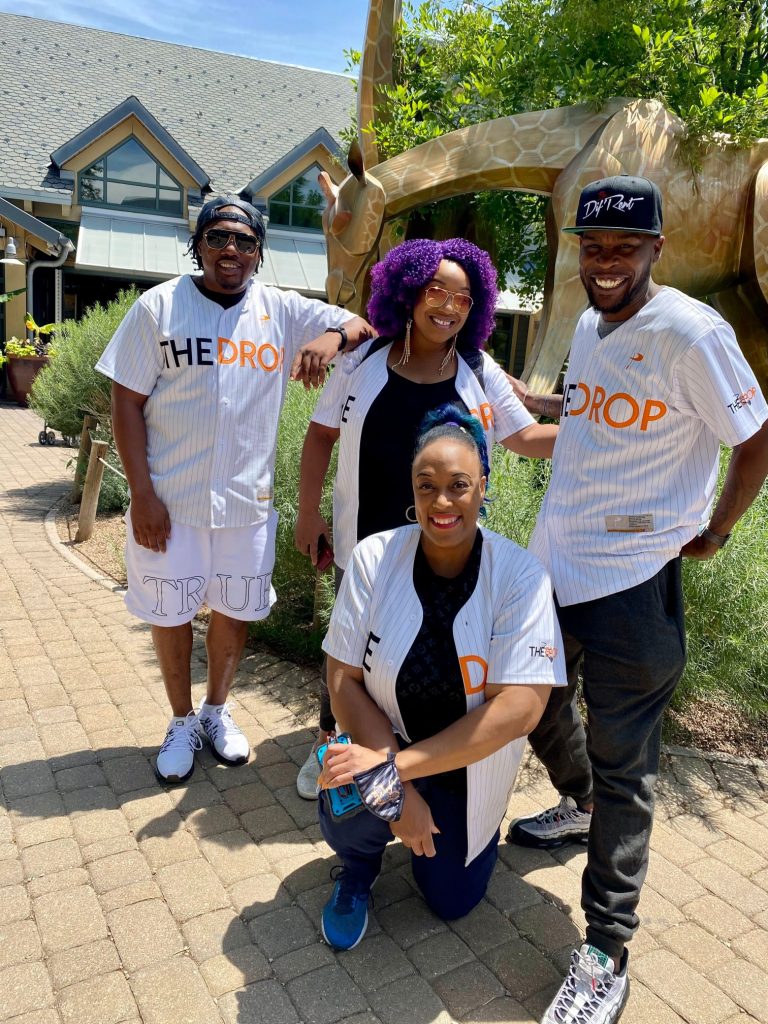
DJ Bella Scratch, Unique, Amerykah, and DJ Dif’Rent. Photo courtesy of The Drop.
As one of the five urban alternative public radio stations in the US, The Drop is an example of how to not just launch a new format but start a new way of representing its community.
“We are here. We are thriving. We are sharing in the success of music and music creators from around the world.” That’s Nikki Swarn’s response to how she and Denver’s The Drop, where she is the General Manager and Program Director, are celebrating Public Radio Music Day this year on November 10th. As one of the five “urban alternative” stations in public radio, The Drop embraces the newly designated genre focusing on hip hop and R&B, while relating to younger audiences through building a community of listeners, station staff, and musicians who are typically underrepresented in the noncommercial radio space.
After starting as an online station in early 2019, The Drop went live at 104.7FM in February 2021. “We landed on the terrestrial dial during the pandemic. It was hard!” Swarn remembers when thinking about that transition. “Then it was about the need of the people of Colorado and how the staff of The Drop could provide refuge during a time of great uncertainty.”
Finding footing during a launch and being on the vanguard of a new format might provide some challenges, but The Drop continues to succeed by providing a much-needed outlet for a committed and excited listenership. It’s a station that found its voice quickly, landing a spot as Westword magazine’s “Best New Radio Station of 2020.” That success is one that’s bolstered by its noncommercial position. “We use our public media status as a superpower,” Swarn points out. “We have the opportunity to pivot and to listen and support our community. It’s an honor to get to serve in this way.” With its track record of artistic freedom, public radio gives new formats an opportunity to start a dialogue between devoted listeners and the station. Swarn is ready and willing to keep that exchange going. “We are a conduit for conversation. We have the benefit of time as it is not correlated to our bottom line.”
Urban alternative stations like The Drop intend to engage with new groups, younger and diverse listeners, that still connect with the DJs and teams at public radio stations. The Drop aims to offer something new for the public media industry and listenership, especially with regards to representing its identity to Black and brown audiences. “That training, connective tissue, and support is important. You can hire a diverse staff, but if there is no earnest and genuine support, people will not stay. And why should they?” Swarn emphasizes.
With a strong staff committing itself to building something new, The Drop and Swarn focused themselves early on. “It’s all about the opportunity to support independent musicians and music creators. I love that this tenet is a mainstay for The Drop. We knew from the very birth of the station that it would be an integral part of the station and its mission. I am excited to see just how impactful the urban alternative genre will be as we continue to take a seat at the table with major labels.” And Swarn knows the most important thing to do with that seat. “Those conversations will be revolutionary.” So Swarn and her staff continue to encourage them.
“There will always be musical challenges: Hendrix was a challenge. Eminem was a challenge. Kendrick was a challenge. It’s to be expected. It’s how you respond and what approach you take that matters.” For Nikki Swarn and The Drop, they’re responding in a way public radio can often do better than any other kind of radio: boldly and with an eagle-eyed view towards the future.